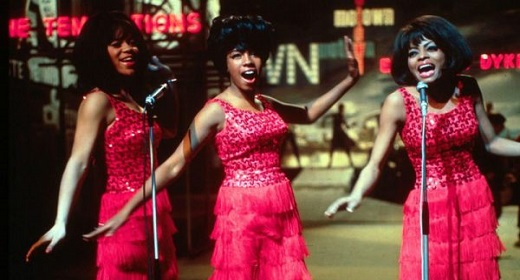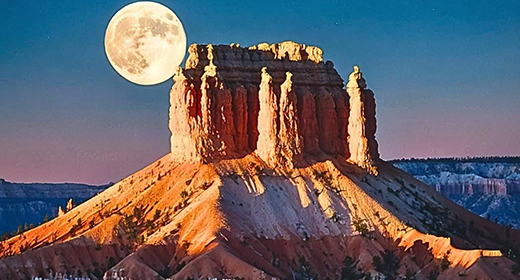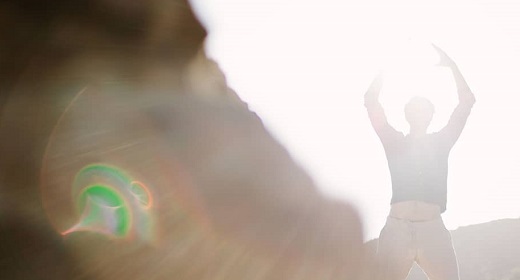by (Variety Staff): It is difficult to think of a more impossible task than attempting to rate the 60 all-time greatest Motown songs…
Founded in 1959 by Berry Gordy, not only has the label — originally a small independent out of Detroit — spawned more classics in the 60 years since its launch than many corporate-giant-owned major record companies, who’s to say whether the Jackson 5’s “I Want You Back” is “better” than such drastically different songs as Marvin Gaye’s “Mercy Mercy Me,” Stevie Wonder’s “Sir Duke,” the Temptations’ “Just My Imagination,” the Commodores’ “Brick House” or Motown-affiliated Migos’ “Bad and Boujee”?
Despite it all, in honor of the label’s 60th anniversary, Variety‘s music staff has dug deep into its collective hearts and minds — because like much of America, all of us grew up on Motown songs — and after some good-natured arguing, assembled a list that includes most of the label’s classic artists and many of its distributed or subsidiary labels (a category that ranges from early imprints including Tamla, Anna and Gordy to the present-day, with Atlanta-based Quality Control). While this list may not be definitive — what could be? — we’re confident that it hits the mark more often than not. There’s a certain Motown magic that all of these songs have: Like Stevie sings in “Sir Duke,” “Just because a record has a groove/ Don’t make it in the groove… ”
1960
Barrett Strong “Money (That’s What I Want)”
Motown’s first hit came from the pen of label founder Berry Gordy and secretary-turned-songwriter Janie Bradford. Recorded in 1959, it’s the lone hit for Barrett Strong as a recording artist. Strong was one of the first artists signed to Motown subsidiary Tamla, though he would be better known as half of Motown’s first great songwriting partnership: with Norman Whitfield, he wrote “I Heard It Through the Grapevine,” “War,” “Papa Was a Rolling Stone” and many others. This single hit No. 2 on the R&B chart in 1960 and promptly went gold. One of the rawest recordings in the Motown canon, the track features only piano, guitar, drums and tambourine and has seen its share of covers from rock bands such as the Beatles, Rolling Stones, the Kingsmen, Paul Revere and the Raiders and others. — Phil Gallo
1961
The Marvelettes “Please Mr. Postman”
Recorded and released in 1961 on Tamla, the song was the first Motown single to hit No. 1 on the pop chart, reaching No. 1 on the R&B chart as well. Gladys Horton, Georgia Dobbins, Georgeanna Tillman, Juanita Cowart and Katherine Anderson started singing together in rural Inkster, Mich., billing themselves as the Casinyets — translation: can’t sing yet — before becoming the Marvels. They received their Motown audition as a prize from a high school singing contest, and after Gordy and songwriter Brian Holland gave them a thumbs up, they recorded “Please Mr. Postman,” which a friend of the group, William Garnett, handed to Dobbins for the initial rewrite. (Dobbins would leave the group before making the record.) Eventually, Holland and his then-partner Robert Bateman worked on the song with an actual postman, Freddie Gorman. Released four months after the Supremes’ first single, it took 14 weeks to make its way to No. 1. — Phil Gallo
The Miracles “Shop Around”
Though Smokey Robinson’s vocal group the Miracles (pictured below) was among the first acts to record for the nascent Motown label in 1959, their initial singles (some of them leased to End Records) had failed to make a dent commercially. Their fortunes changed with “Shop Around,” but it took some extra effort. After the song — a droll slice of mother-to-son romantic advice — was released to Detroit radio, Gordy had second thoughts and hauled the Miracles out of bed for a 3 a.m. session to re-record the song. The smoother, more up-tempo remake connected with national listeners: A No. 1 R&B smash that held at the top for eight weeks, it also vaulted to No. 2 on the pop charts, becoming the label’s first million-selling 45. — Chris Morris

Smokey Robinson (far right) and the Miracles
1962
The Contours “Do You Love Me”
By 1962, this vocal quintet had two flop Motown singles to their credit, and they may have wound up as a footnote in the label’s history if the Temptations had shown up as scheduled to record “Do You Love Me.” Berry Gordy, the song’s author, had earmarked the high-energy number for the Temps, but on the evening of the session they were attending a Dixie Hummingbirds gospel show and couldn’t be located. Drafted on the spot in the studio, the Contours responded with one of the most rocking entries in the Motown discography. Its famous fake fade-out was the inspiration of studio engineer Sammy Mack, a former member of the first group to release a single on the label, the Satintones. “Do You Love Me” reached No. 1 on the R&B charts and No. 3 on the pop side in the summer of ’62. — Chris Morris
The Miracles “You’ve Really Got a Hold on Me”
Remarkably, one of the Miracles’ biggest hits began life as a single B-side. In November 1962, “Happy Landing,” a nondescript up-tempo number featuring a wildly off-key lead vocal by Smokey Robinson, was released to radio. However, DJs around the country ultimately made the right call and started spinning the flip, a gospel-styled ballad that Robinson had written in the manner of Sam Cooke’s No. 2 hit of earlier that year, “Bring It on Home to Me.” Smokey’s duet with Bobby Rogers ultimately roared to No. 1 on the R&B rolls (becoming the Miracles’ second chart-topper) and crossed over to pop, reaching No. 8. Across the Atlantic, the Beatles were paying attention: “You’ve Really Got a Hold on Me” joined Barrett Strong’s “Money” and the Marvelettes’ “Please Mr. Postman” among the trio of Motown tracks covered by the Fab Four on their second British LP, 1963’s “With the Beatles.” — Chris Morris
Mary Wells “Two Lovers”
Mary Wells was one of Berry Gordy’s first signings — a 17-year-old fresh out of high school with a deal at Tamla in 1960. A year later, she was Motown’s first female artist to hit the Top 40 and, after scoring three consecutive hits with songs written and produced by Smokey Robinson, its first solo star. “Two Lovers,” a No. 1 R&B hit in 1962, sold a million copies and her album went Top 10, establishing her as the label’s biggest star at the time. When the first Motortown Revue tour started in 1962 Wells was the headliner — two years before she’d record her signature song, “My Guy.” — Phil Gallo
Mary Wells “The One Who Really Loves You”
Motown’s first solo superstar will be tied to “My Guy” forever, and rightly so. Two years before Wells ruled Billboard’s Hot 100 with her signature song, though, her labelmate Smokey Robinson wrote and produced this gritty single that would become her first major hit (No. 8 pop, No. 2 R&B) and the first of her three consecutive pop top 10s in 1962. Featuring complex key changes, unconventional instrumentation (punctuated by cymbals and vibraphone), and vocals that go from taunting to pleading to caressing in two and a half minutes, “The One Who Really Loves You” employed the female-male call-and-response style that would later make Gladys Knight & the Pips Motown legends. It was also Robinson’s first top 10 as a songwriter for another artist, marking it as a landmark record for him, for Wells, and for Motown. — Jeremy Helligar
1963
Martha and the Vandellas “Heatwave”
This early Motown classic, written by the Holland-Dozier-Holland team, earned Martha and the Vandellas (pictured, top) a Grammy nomination, the first for a Motown artist. Though not an original member, Martha Reeves took over lead vocals for an impressive run of hits that started with “Come and Get These Memories” in February ’63 and was followed later that year with “Heatwave,” which peaked at No. 4. “Whenever I’m with him,” Reeves begins, “something inside starts burning and I’m filled with desire.” She’s joined in call and responses by the other Vandellas, Rosalind Ashford and Annette Beard. The propulsive dance beat, punctuated by a honking baritone sax, builds to a fiery crescendo. Linda Ronstadt’s 1975 version of the song also hit the Top 10, and that year the British pop-funk band Heatwave took the song title as their moniker. — Steve Bloom
Little Stevie Wonder “Fingertips (Parts I and II)”
Back when he was known as Little Stevie, this two-sided portrait of the genius as a 13-year-old prodigy introduced the soon-to-be-superstar to the world. The single, which went to No. 1 on the Hot 100, was the first live, non-studio recording to do so since Johnny Standley’s 1952 comic monologue “It’s in the Book.” Wonder originally recorded the track (written by his mentors Clarence Paul and Henry Cosby) as an instrumental for his first studio album, “The Jazz Soul of Little Stevie.” Mostly sans vocals, the resultant two-sided single is a tribute to the youngster’s versatility on harmonica and bongos. “Part II” starts with Stevie exhorting the crowd with “Everyone say yeah” and goes into a gospel-style call-and-response. The crowd then claps along to his extended harp solo before he returns to the stage, James Brown-style, for an extended encore. — Roy Trakin
1964
Martha & the Vandellas “Dancing in the Street”
Penned by Marvin Gaye, Ivy Jo Hunter and William Stevenson, this single quickly reached No. 2 on the Billboard Hot 100, then scored hits on that chart in decades to come for Van Halen and the duet team of David Bowie and Mick Jagger. (The Grateful Dead even released it as a single in 1977 after making the song an unlikely staple of their live shows.) What makes Martha Reeves and her ladies’ version the finest is its leader’s clarion vocal call, its anthem-like melodic rise, and blaring brass that still cuts like a knife through your speakers. Most of the song’s charms, however, stem from universal-minded lyrics that would become a hallmark of the Motown philosophy. The song was widely perceived as lending an amicable tone to the civil rights movement with its “invitation across the nation / A chance for folks to meet.” — A.D. Amorosi
The Supremes “Where Did Our Love Go”
With seven of their first eight Motown singles failing to chart higher than No. 75, it’s no surprise that Mary Wilson started calling her group “the no-hit Supremes.” But then the writing/producing team of Holland-Dozier-Holland brought the trio “Where Did Our Love Go,” a song already rejected by another Motown girl group, the Marvelettes. That group’s lead singer, Gladys Horton, told Lamont Dozier, “No way am I going to sing any junk like that!” The Supremes weren’t crazy about it either, but didn’t have the power to say no. “They were low on the totem pole,” Dozier explains. Recorded in April 1964 and released in June, the song with a handclap-intro and irresistible hook of “baby, baby” shot to No. 1 in August. It was the first of five consecutive No. 1s for the formerly “no-hit” Supremes and paved the way for Motown’s ‘60s chart dominance. — Fred Bronson
The Temptations “My Girl”
A sibling song to Mary Wells’ “My Guy,” the Temptations’ “My Girl” (also written by Smokey Robinson with fellow Miracle Ronald White) propelled the quintet to instant stardom when it hit No. 1 in early ’65. Consisting of David Ruffin, Eddie Kendricks, Paul Williams, Melvin Franklin and sole surviving founding member Otis Williams, the Tempts offered a variety of vocals, from Ruffin’s alto to Kendricks’ falsetto to Otis Williams’ memorably deep baritone. For “My Girl,” Ruffin was tapped to sing his first lead, and he killed it. Heavily complemented with horns, strings, the famous guitar intro and finger snaps, Ruffin delivers the message of love for a special woman. “What can make me feel this way?,” he asks, and the others reply confidently, “My girl.” — Steve Bloom
Mary Wells “My Guy”
Wells, Motown’s first female star, teamed with up songwriter Smokey Robinson on a number of hits, but none would top the No. 1 “My Guy,” on which Wells declares loyalty to her man despite others knocking on her door. “I’m sticking to my guy like a stamp to a letter,” she notes. “Like birds of a feather, we stick together.” The jaunty beat, complete with handclaps, propels the song until its final chorus as Wells slowly repeats, “There’s not a man today who could take me away from my guy.” Petula Clark and Sister Sledge later covered the song. After the success of “My Guy,” Wells had a falling out with Motown and, while signing on with several other labels, never again had a Top 10 hit. — Steve Bloom

Diana Ross (far right) and the Supremes
1965
The Marvelettes “Don’t Mess With Bill”
The Miracles (featuring Smokey Robinson) and the Marvelettes predated the success of the Temptations and the Supremes by a few years in the early ’60s. After a No. 1 hit with “Please Mr. Postman” in 1961, the Marvelettes cranked out minor hits until this Robinson number returned them to Top 10 relevance (peaking at No. 7). Featuring lead singer Wanda Rogers and backups Gladys Horton and Katherine Anderson, the song starts with the chorus, then springs into verses that remind other women to stay away from their man (“he’s mine, all mine”). A bluesy eight-bar sax solo punctuates the ladies’ sanguine commentary. However, the Marvelettes would soon be supplanted by the Supremes as the label’s premiere girl group, and they eventually faded from Motown glory. — Steve Bloom
The Miracles “The Tracks of My Tears”
Bob Dylan’s description of Smokey Robinson as “America’s greatest living poet” may very well be apocryphal, but the chorus of the Miracles’ 1965 hit “The Tracks of My Tears” could be used to make a case for that assertion. Kicking off with a plangent solo introduction by Marv Tarplin, the Miracles’ guitarist from the beginning of their Motown career, this tune about the false public face of a heartbroken lover builds slowly in power, rising on one of Smokey’s most affecting vocal performances. Possibly the most elegant song ever written by Robinson, it failed to reach No. 1 on the R&B charts, cresting at No. 2, and peaked at No. 6 on the pop list. But it has enjoyed a long life via hit covers by Johnny Rivers and Linda Ronstadt and its moving use in such feature films as “The Big Chill” and “Platoon.” — Chris Morris
The Supremes “Stop! In the Name of Love”
Lamont Dozier was arguing with his girlfriend when he told her — you guessed it — “Stop, in the name of love.” “We both started laughing and stopped arguing,” says the writer/producer, who turned the incident into the Supremes’ (pictured above) fourth consecutive No. 1 single. Soon after recording the song in January 1965, Diana Ross, Mary Wilson and Florence Ballard flew to London, where they were scheduled to perform “Stop!” on the “Ready, Steady, Go!” TV special “The Sound of Motown,” hosted by Dusty Springfield, but they had no choreography for the new song. They ducked into a room at the studio with Paul Williams and Melvin Franklin of the Temptations and came up with the one-hand-on-hip, one-hand-outstretched-with-palm-up motion that quickly became their signature move. The song was, well, unstoppable: It was a top 30 hit in 1983 for the Hollies, with Allan Clarke singing lead and Graham Nash providing harmony. — Fred Bronson
The Velvelettes “He Was Really Sayin’ Somethin’”
The Velvelettes were one of Motown’s tertiary girl groups, assigned to a lesser-known imprint, V.I.P. The trio never received the same attention as the Supremes or Martha & the Vandellas but still created a fan base thanks to two charted singles, “Needle in a Haystack” in 1964 and “He Was Really Sayin’ Somethin’” a year later. The former sounded like a Holland-Dozier-Holland concoction, even though it was written by Mickey Stevenson, Norman Whitfield and one of the Holland brothers, Eddie. The same three men were responsible for “Really Sayin’ Somethin,” but that song sported unique production and lyrics that were clearly about seduction. In 1982, U.K. girl group Bananarama teamed with Fun Boy Three for a cover that peaked at No. 5 on the British chart. — Fred Bronson
Junior Walker & the All-Stars “Shotgun”
Berry Gordy created the Soul label in 1964 to release harder-edged R&B and less-commercial music than Motown and Tamla releases, such as records such as Shorty Long’s “Devil With the Blue Dress” and instrumentals from members of Motown house band the Funk Brothers. The label’s sixth release — and first 1965 single — was “Shotgun,” which hit the commercial bullseye of No. 1 R&B in March and went Top 5 pop by April. It was the first of four consecutive Top 10 R&B hits for Walker. The saxophonist had come to Gordy via his brother-in-law Harvey Fuqua, who had signed him to Harvey Records in 1961, which Gordy would later acquire. Largely an instrumentalist, Walker made his singing debut on “Shotgun” when the singer booked for the session and was a no-show. — Phil Gallo

The Temptations
1966
The Elgins “Heaven Must Have Sent You”
The vocal group formerly known as the Five Emeralds signed to Motown as the Downbeats. Berry Gordy wasn’t crazy about the name and it was changed to the Elgins, a moniker briefly assigned to the Temptations in 1960. Although the Elgins were working with Motown’s top writing/producing team of Holland-Dozier-Holland, their debut single “Darling Baby” stalled at No. 72. The follow-up, “Heaven Must Have Sent You,” originally intended for the Supremes, is revered by Motown fans, though it was a mid-charter, peaking at No. 50. Lead vocalist Saundra Mallett Edwards could hold her own with Diana Ross and Martha Reeves, but the Elgins never climbed higher on the charts and she left the group in 1968.“Heaven” was revived by Bonnie Pointer on Motown in 1978 and a disco mix brought the song its long-awaited due, as it reached No. 11 on the Hot 100 in October 1979. — Fred Bronson
Four Tops “Reach Out (I’ll Be There)”
Holland-Dozier-Holland’s 1966 masterpiece of love-and-devotion pop-soul became the second of Four Tops’ two No. 1 pop hits and also Motown’s second chart-topper in the U.K. (following The Supremes’ “Baby Love” from two years earlier). It’s at once haunting and uplifting, with a propulsive, galloping rhythm that predicted the rise of disco less than a decade later. (Indeed, future “I Will Survive” singer Gloria Gaynor scored an international hit with her discofied remake in 1975.) Written and produced with impeccable craftsmanship by H-D-H, the song has as its greatest weapon the one quality that none of the countless cover versions that followed could possibly imitate: the lead vocal. Levi Stubbs’ baritone, a standout mix of gospel shouting and soul swagger, was a marked departure from the urbane elegance that had become Motown’s trademark. That voice and the song that showcased it best remain two of the label’s greatest wonders. — Jeremy Helligar
Isley Brothers “This Old Heart of Mine (Is Weak for You)”
Another of Motown’s classic tales of broken romance, this Holland-Dozier-Holland gem was penned with Sylvia Moy, the first woman to write and produce Motown acts and a frequent Stevie Wonder collaborator. It was originally intended for the Supremes (who did get around to recording it for their “Supremes a Go Go” album), but first and foremost, it proved a crucial vehicle for 25-year-old lead singer Ronald Isley. While the Isleys aren’t usually associated with the label (they split soon after to form their own T-Neck imprint), this was their only hit for Motown, peaking at No 12 on the pop charts and No. 6 at R&B. Subsequent generations may have associated it even more with Rod Stewart: He covered it on 1975’s “Atlantic Crossing” album, then re-recorded it in 1990 with — naturally — Ronald Isley, scoring a Top 10 pop hit. — Roy Trakin
Jimmy Ruffin “What Becomes of the Brokenhearted”
What becomes of a song that was originally intended for the Spinners? Ruffin, the older brother of Temptations vocalist David, found out. Lyricist James Dean (who co-wrote it with William Weatherspoon and Paul Riser) was convinced by David to let Jimmy record it. The elder Ruffin’s plaintive vocal forms the perfect combination with the Funk Brothers for the 1966 Hitsville USA production, which also featured two in-house singing groups, the Originals and the Andantes. The song peaked at No. 7 on the Billboard Hot 100 and No. 6 at R&B. U.K. pop singer Paul Young covered the song for the soundtrack of the 1991 film “Fried Green Tomatoes,” reaching No. 22 on the pop chart. — Roy Trakin
The Supremes “You Can’t Hurry Love”
It’s hard to imagine a song more synonymous with the Motown Sound than the Supremes’ “You Can’t Hurry Love.” The classic soul/pop masterpiece, part of a remarkable string of hits for the girl group during their 1965-1967 heyday, was written and produced by Motown’s main production team, Holland–Dozier–Holland, and went on to top both the R&B and pop charts in America in 1966. Of course, it seems as if the song never really left the charts, thanks to recurrent airplay… and also to England’s Phil Collins, whose reverential 1982 take on the track reached No. 1 on the UK charts and the top 10 in the U.S., marking the crucial turning point in his transition from art-rocker to pop star. — Charlie Amter
The Temptations “Ain’t Too Proud to Beg”
After helping the Temptations (pictured above) cross over to mainstream audiences with his lead on “My Girl,” David Ruffin again flexed his vocal muscles on this, the group’s next big hit (peaking just shy of the top 10 at No. 13), written by Norman Whitfield and Eddie Holland and produced by Whitfield. It was the beginning of a beautiful relationship between the Tempts and Whitfield, who would go on to write and produce some of the group’s greatest songs, including “Cloud Nine,” “Papa Was a Rolling Stone,” “I Can’t Get Next to You,” “Just My Imagination (Running Away with Me),” “Psychedelic Shack” and “Ball of Confusion.” “Ain’t Too Proud” is somewhat tame by comparison to what was to come with this alliance. This old-school R&B style would soon transition into full-blown funk. — Steve Bloom
1967
Four Tops “Standing in the Shadows of Love”
One of the vocal quartet’s most theatrical tracks, this was also one of the Holland-Dozier-Holland writing team’s most enduring and powerful — so it’s no wonder Barry White and the Jackson 5 covered it, as did Tops leader Levi Stubbs’ kid brother, Joe. Following the Four Tops’ No. 1 “Reach Out I’ll Be There,” which struck a similarly yearning tone, “Standing in the Shadows of Love” hit No. 2 on Billboard’s R&B chart and No. 6 on the Billboard Hot 10. The power of sorrowful portent and “getting ready for the heartache to come” — as intoned by gruff, rumbling baritone Stubbs — is followed by dramatic rolling congas and the singer’s own nearly a capella break where he demands validation for how much dedication he’s given to this now-broken relationship: “Didn’t I do the best I could, now didn’t I?” A nation of AM listeners could only answer in the affirmative. — A.D. Amorosi
Smokey Robinson & the Miracles “The Tears of a Clown”
No one chronicled teenage heartbreak quite like Robinson, and this gem is his spiritual equivalent to the ache of adolescent longing exhibited by Beach Boys songwriter Brian Wilson’s “In My Room” and “God Only Knows.” No one but Smokey could come up with a couplet like “Just like Pagliacci did/ I try to keep my surface hid.” (Hank Crosby and Stevie Wonder created the music.) Appearing on the 1967 album, “Make It Happen,” the song was belatedly released as a single in the U.K. in 1970, where it reached No. 1 on the pop charts, then duplicated that success in the U.S., the only time the Miracles experienced that with Robinson as lead vocalist. The song was inducted into the Grammy Hall of Fame in 2002. — Roy Trakin

Marvin Gaye
1968
Marvin Gaye & Tammi Terrell “You’re All I Need to Get By”
Duets were a staple of the Motown business, and none had a greater chemistry than Marvin Gaye (pictured above) and Tammi Terrell, whose attraction for each other should be obvious to any listener. While Aretha Frankin’s later cover of the song was arguably more passionate, Marvin and Tammi made the Ashford & Simpson-penned tune playful and coy. With shimmering strings and tuned chimes behind him, the debonair Gaye starts with “Like the sweet morning dew, I took one look at you / And it was plain to see, you were my destiny,” before the angelic Terrell comes in. Thanks to the pair’s sweetly innocent and soulful display, the single peaked at No. 7 on Billboard’s Hot 100 and No. 1 on its R&B chart, two years before Terrell would pass away from a brain tumor at age 24. — A.D. Amorosi
Marvin Gaye “I Heard It Through the Grapevine”
As ominous as the opening rattlesnake shaking of percussionist Jack Ashford’s tambourine, Gaye’s version of this Norman Whitfield-Barrett Strong composition was actually recorded before Gladys Knight & the Pips’ explosive 1967 recording. But it was vetoed as a single release, and in late ‘67 Knight scored a No. 1 pop and No. 2 R&B hit that proved to be the biggest single of her career. However, after a DJ at Chicago R&B station WVON pulled Gaye’s rendition off his 1968 album “In the Groove,” it blew up locally. Finally issued as a 45, Gaye’s “Grapevine” topped Knight’s hit, becoming the biggest of the singer’s three singles to reach the pinnacle of both the pop and R&B charts and his longest-running pop hit, logging seven weeks at No. 1 nationally. For many, it remains the definitive reading of this unnerving song about romantic suspicion and deceit. — Chris Morris
The Temptations “Cloud Nine”
By ‘68, the Temptations had turned the corner from a traditional vocal quintet to a pioneering, tough voiced, socially conscious with a battery of powerful songs mostly written and produced by Norman Whitfield. “Cloud Nine,” which peaked at No. 6, was the group’s first step in that direction. David Ruffin had been replaced by Dennis Edwards, who shared lead vocals with Paul Williams and Eddie Kendricks. The rollicking number eschews the string arrangements of previous songs and employs piercing horns and conga drums as it drives to a thrilling conclusion. Influenced by Sly & the Family Stone, the Tempts found a new identity that would peak several years later with “Papa Was a Rolling Stone.” — Steve Bloom
1969
“I Want You Back” The Jackson 5
The only single released from the Jackson 5’s debut album, “Diana Ross Presents the Jackson 5,” “I Want You Back” holds the honor of being the first of four consecutive No. 1 hits for the singing band of brothers. Produced by The Corporation (Berry Gordy, Alphonso Mizell, Freddie Perren, Deke Richards), the song was originally intended for Gladys Knight, and then considered for Diana Ross. Bolstered by then-11-year-old Michael’s plaintive pleas to his “Baby,” the song was also the first the group performed on television, both for Diana Ross’ “The Hollywood Place” as well as their December 1969 stop at “The Ed Sullivan Show.” It remained part of the concert repertoire for both the group’s and Michael Jackson’s tours, even up to Michael’s death: He’d planned to include it in his “This Is It” comeback shows. — Janeé Bolden

The Jackson 5
1970
The Jackson 5 “I’ll Be There”
This song is so timeless that it topped the Billboard Hot 100 twice, 21 years apart. Mariah Carey, the second act to take it to the top, was still in diapers when the Jackson 5’s fourth single became the group’s fourth consecutive No. 1. They’d never again top the pop chart, but they certainly saved the best and biggest for last. A you’ve-got-a-friend love declaration one year before James Taylor’s “You’ve Got a Friend,” “I’ll Be There,” along with “ABC,” is arguably The Jackson 5’s best-known hit and signature song. Released in 1970, it replaced Marvin Gaye’s “I Heard It Through the Grapevine” as Motown’s most successful single in the U.S. until Diana Ross and Lionel Richie’s 1981 duet “Endless Love” dethroned it more than a decade later. — Jeremy Helligar
Rare Earth “I Just Want to Celebrate”
One of the most popular songs of 1970, “Celebrate” was Rare Earth’s biggest-selling original tune. The group, which had success covering Temptations hits, was the first white rock band in the Motown stable to achieve commercial success. Gordy had set up an unnamed rock label in 1968 and a year later signed the group, which had made an unsuccessful album for Verve; the bandmembers jokingly suggested naming the label Rare Earth, and to their surprise Gordy obliged. While the album “One World” includes covers and originals by band members, its lone hit came from the team that wrote the Supremes and Four Tops’ hit “You Gotta Have Love in Your Heart,” Nick Zesses and Dino Fekaris, the latter of whom would later co-write “I Will Survive.” — Phil Gallo
Diana Ross “Ain’t No Mountain High Enough”
When Diana Ross and the Supremes split into two acts, most people assumed Ross would have more chart success — but the group’s “Up the Ladder to the Roof” peaked at No. 10 while her “Reach Out and Touch,” stalled at No. 20. Then Motown released Ross’ first solo album, including a six-minute, 18-second, gospel-centric cover of Marvin Gaye & Tammi Terrell’s 1967 hit, “Ain’t No Mountain High Enough.” It was too long to be a single, so DJs made their own edits and played it in heavy rotation. Motown followed with its own edit but nothing could touch Nick Ashford & Valerie Simpson’s full-length production. “We thought Diana had an interesting speaking voice,” says Simpson. “The slow build worked well, and by not singing the actual chorus until the very end, we thought it added drama and surprise.” — Fred Bronson
Edwin Starr “War”
It’s seldom remembered that the Temptations originally cut this countercultural Vietnam War protest anthem for their “Psychedelic Shack” album in 1969. But the tune, composed by Norman Whitfield and Barrett Strong, was eventually re-recorded with Starr — who was considered to not have as many conservative fans to offend as the Temptations — and his version hit No. 1 on the pop charts for three weeks. One of the most strident anti-war songs to ever hit the Top 40, it became a live staple for Bruce Springsteen, who went Top 10 with it in 1986. Starr, who came to Motown after his Ric-Tic label was acquired by Berry Gordy, recorded “War” with a James Brown-like grunt in a lavish production that included clavinets, a horn section and group vocals by the Undisputed Truth and the Originals. — Roy Trakin
Stevie Wonder “Signed, Sealed, Delivered I’m Yours”
The first single Stevie Wonder produced on his own remains one of his most beloved. The song spent six weeks at No. 1 on the R&B chart in 1970 and hasn’t left America’s subconscious since (it’s currently the centerpiece of an Applebee’s Grill & Bar nationwide ad campaign). Wonder wrote it with Motown songwriters Lee Garrett and (his future wife) Syreeta Wright, along with his mother Lula Mae Hardaway. Peter Frampton took a cover to the top 20 in 1977, but its most memorable latter-day usage came when Wonder’s original sealed up the night at the end of future president Obama’s campaign rallies in 2008. — Charlie Amter
1971
The Temptations “Just My Imagination (Running Away With Me)”
Eddie Kendricks was fed up with his fellow bandmates on a personal and professional level in 1970. He craved a solo career, but also a chance to move the Temptations away from their new psychedelic soul sound and return to the smooth love songs of their earlier days. In writing and selecting material for the album “Sky’s the Limit,” Norman Whitfield and Barrett Strong offered a song they had been sitting on, “Just My Imagination,” to follow up the less-than-successful “Ungena Za Ulimwengu (Unite the World)” — and “Imagination” would be their third No. 1 pop single. Whitfield presented the group with a finished instrumental track, complete with strings and horns, a perfect match for Kendricks’ falsetto at its most tender. It would be the last Temptations single to feature Kendricks and Paul Williams, who sings the “Every night on my knees I pray” line. — Phil Gallo
Marvin Gaye “What’s Going On”
Marvin Gaye was personally and professionally unmoored in the summer of 1970: His duet partner Tammi Terrell had died, he’d had one top-10 R&B hit in the last year and he was at loggerheads with his label. But from June to September of that year, he labored on a socially conscious new composition, co-written with Al Cleveland and the Four Tops’ Obie Benson, which would mark a turning point in his art. Producing himself, he clashed repeatedly with Berry Gordy as he arduously recorded and remixed the song, which reflected the era’s political and social tumult in explicit terms. Finally released in January 1971, the potent, densely layered “What’s Going On” arrived as something utterly new in the annals of Motown. It topped the R&B chart, rose to No. 2 on the pop side and set the course for Gaye’s and Motown’s most ambitious work. — Chris Morris
The Undisputed Truth “Smiling Faces Sometimes”
Influenced by Sly & the Family Stone, producer Norman Whitfield mastered his own brand of psychedelic soul at Motown. In April 1971, the Temptations released a Whitfield-produced album with a 12-minute, 43-second opus about back-stabbing friends, “Smiling Faces Sometimes.” Plans for an edited version to be issued on 45 were scrapped when one of the song’s co-lead vocalists, Kendricks, left for a solo career. Whitfield quickly recorded another version with a group he created, the Undisputed Truth. Their take was issued in May 1971, eventually peaked at No. 3 and was the group’s only top 40 hit. A year later, Whitfield did the same trick in reverse, by taking the Undisputed Truth’s “Papa Was a Rollin’ Stone” and almost immediately recording another version with the Temptations, who had a No. 1 hit with the song. — Fred Bronson
1972
Stevie Wonder “Superstition”
The lead single from 1972’s “Talking Book,” Wonder’s first album to hit No. 1 on the R&B chart, “Superstition” hit No. 1 pop and R&B in January of 1973. It had been a decade since Wonder had a No. 1 — “Finger Tips Pt. 2” — and it would result in the artist winning his first of 25 Grammys, taking home the Best R&B Song trophy. Wonder created “Superstition” as a collaboration with rock guitarist Jeff Beck, though the released version has Wonder on most of the instruments. The song is the first payoff from Wonder taking full artistic control of his work, a move that started one of the strongest strings of artistic and commercial success in pop music history. By the end of 1980, he had registered a dozen Top 40 singles, six Top 5 albums and 11 Grammy Awards. — Phil Gallo
The Temptations “Papa Was a Rollin’ Stone”
Originally penned by producer Norman Whitfield and Barrett Strong for the Undisputed Truth – whose lead singer Joe Harris contributed its title line – the song, and Whitfield’s expansive conception of “psychedelic soul,” had their apotheosis in the Temptations’ version. Originally 12 carefully sculpted minutes of wah-wah guitar, pulsing bass, echo-laden trumpet, darting strings, insistent hand claps and call-and-response vocals, this affecting one-act play in music about a wayward ghetto father’s emotional legacy bowed as a traffic-stopping track on the Temps’ album “All Directions.” Edited down to a more radio-friendly but still expansive seven minutes, the number became the vocal group’s last single to reach No. 1 on the pop charts and its final platinum-selling 45. Powerful and uncompromising, it exemplified the sophistication and social consciousness of Motown’s mature early-‘70s music. — Chris Morris

Stevie Wonder
1973
Marvin Gaye “Let’s Get It On”
One of Motown’s most consistent hitmakers in the ’60s, Gaye raised the bar considerably with the openly political messages of the “What’s Going On” album in 1971. Two years later, he went in a completely different direction with the sexually explicit “Let’s Get it On” album, which featured suggestive — or beyond suggestive — titles like “You Sure Love to Ball,” “Keep Gettin’ It On” and the title track, which soared to No. 1 in the summer and fall of ’73. Starting with four of the most recognizable guitar notes in Motown history, the song’s laconic pace combines horns and strings as Gaye offers seductive inducements: “I ain’t gonna worry, I ain’t gonna push, I won’t push ya, baby,” he encourages. “Come on, baby, stop beating around the bush.” — Steve Bloom
Eddie Kendricks “Keep on Truckin’”
This 1973 chart-topper was the biggest solo hit by a member of the Temptations and the only one to go all the way to No. 1 on the pop singles chart. Its danceable funk presaged the disco movement that would dominate pop from the mid ’70s until the end of the decade, while kicking off the most successful era of Kendricks’s solo run. Motown’s Tamla label split the eight-minute cut from Kendricks’ self-titled third album into Parts 1 and 2 for vinyl single release to increase its commercial viability. It worked: Along with helping to make falsetto singing a soul staple (where would Prince have been without it?), it borrowed a ’60s hippie catchphrase and introduced it into the African-American vernacular, ensuring immortality for both the song and the man who made it one of Motown’s biggest hits of the ’70s. — Jeremy Helligar
Stevie Wonder “Living for the City”
Drawn from the landmark “Innervisions” – the first of three consecutive albums by Stevie Wonder to capture a Grammy Award as album of the year – the track “Living for the City” represented the fullest flowering of the singer-songwriter-musician’s artistry to date. Like its predecessor single “Higher Ground,” it featured Wonder playing all of the instruments on the song. But it cut even deeper lyrically – it was a caustic depiction of the poverty, prejudice and injustice faced every day by black men and women. The nearly seven-and-a-half-minute track incorporated a movie-within-the-song following the dark fate of one naïve arrival in the big city. The uncompromising “Living for the City” topped the R&B charts for two weeks, reached a peak of No. 8 on the pop side, and was named best R&B song at the 1975 Grammy Awards. — Chris Morris
1977
Stevie Wonder “Sir Duke”
From Stevie Wonder’s 1976 classic “Songs in the Key of Life,” “Sir Duke” paid tribute, in large part, to jazz great Duke Ellington, who’d passed away in 1974. But Wonder’s verses also served as a salute to other jazz greats, including Count Basie, Glenn Miller, Louis Armstrong and Ella Fitzgerald with lyrics that include “There’s Basie, Miller, Satchmo, and the king of all Sir Duke/ And with a voice like Ella’s ringing out/ There’s no way the band can lose.” With its playful horns throughout and Stevie’s vocals dancing against a vibrant background of instrumentation, the fact that Wonder’s experience with music was one that he “could feel it all over” is not lost on the listener. A No. 1 hit, “Sir Duke” served as a precursor to later tributes like “Master Blaster,” in honor of Bob Marley, and “Happy Birthday” for Martin Luther King, Jr. — Janeé Bolden
1980
Jermaine Jackson “Let’s Get Serious”
Before his baby brother Michael and baby sister Janet became global superstars, Jermaine scored his first No. 1 R&B single as a solo act and his second and final top-ten pop hit under his own name (and second to hit No. 9) with this 1980 post-disco jam. Stevie Wonder wrote, produced and sang on it, and his imprint is unmistakable. Still, the most underrated Jackson made it all his own. “Let’s Get Serious” was so popular with black fans that it ended up being the No. 1 R&B single of the year, edging out Michael’s “Rock With You,” which was No. 2. Jermaine never again scaled those heights, but his biggest single outside of the Jackson 5 earned him a secure spot in the firmament of essential Motown solo stars. — Jeremy Helligar
Diana Ross “I’m Coming Out”
The ex-Supreme’s sixth top-ten pop single as a solo artist holds a pair of interesting distinctions. First, it was her first top 10 hit not to reach No. 1 (it peaked at No. 5 in 1980). Second, coming after the chart-topping “Upside Down,” it was the first time in Ross’s solo career that she had two consecutive Top 10 pop hits. The iconic status of the second single from Ross’s multiplatinum “Diana” album transcends chart statistics, though. What other Motown smash can call itself an anthem of gay pride? The legacy of “I’m Coming Out” is more impressive than its chart numbers: The empowerment declaration, which was written and coproduced by Chic cofounders Nile Rodgers and the late Bernard Edwards, is one of Motown’s most frequently sampled hits, and it cemented Ross’s status as an LGBTQ icon for decades to come. — Jeremy Helligar
Teena Marie “Behind the Groove”
“Behind the Groove” wasn’t Teena Marie’s biggest Motown hit (that honor would go to “I Need Your Lovin’,” another 1980 single), but it may have been her most significant. Marie debuted as a Rick James protegee with 1979’s “Lady T” album, written almost entirely by James, before getting behind the groove and in front of her own career. The opening track on “Lady T,” the sophomore album that gave Marie her nickname, “Behind the Groove” announced the arrival of a singular R&B singer and songwriter (and later, producer). Its funky soul is so frenetic that listening to it can be as exhausting as dancing to it. One wonders how Marie managed to keep up with the beat while still nailing every vocal somersault.— Jeremy Helligar
1981
Rick James “Super Freak”
Rick James may have built his reputation as a funkmaster general, but this song rocks so hard that the Grammys nominated it for Best Male Rock Vocal Performance (while nominating “Street Songs,” the title track of the album from whence both songs came, for the same category — in R&B). With background vocals from the Temptations, the song was famously sampled by M.C. Hammer in 1990 for “U Can’t Touch This.” Its peak on the pop chart at No. 16 scarcely hints at what a global phenomenon it became — the song topped the dance club chart in 1981, and it’s been ubiquitous on dancefloors in every year since. — Roy Trakin
1982
Charlene “I’ve Never Been to Me”
In 1982, an unknown singer named Charlene scored Motown’s biggest hit by a white solo singer with a flop from five years earlier. Originally released in 1977 on Motown’s Prodigal subsidiary, “I’ve Never Been to Me” merely nicked the charts during its first run. It wasn’t until it was revived in 1982 as a proper Motown single after becoming a local radio hit in Tampa that it flew up Billboard’s Hot 100 all the way to No. 3. Although it’s basically a three-minute-and-47-second soap opera set to music, Charlene’s first and only hit was like nothing else on the radio at the time and remains an anomaly of ’80s pop. A second resurgence in the 1994 film “The Adventures of Priscilla, Queen of the Desert” turned it into a pop-culture staple, and it later seemed to pop up everywhere, from “Absolutely Fabulous” to “Saturday Night Live” to “Will and Grace.” — Jeremy Helligar
DeBarge “All This Love”
After the success of the Jacksons and brother Michael (to say nothing of his eventual departure for Epic), Motown never stopped searching for another set of singing siblings fronted by a male vocalist with a high, wide tenor. The label found as much in their original backyard, Detroit, with DeBarge and brother El DeBarge, the young singer behind the songwriting and co-producing (with Berry Gordy’s niece, Iris Gordy) of this, the group’s first hit single. Reaching No. 17 on Billboard’s Hot 100 and No. 1 on its adult contemporary chart, the creamy cosmopolitan ballad was supposedly penned for Marvin Gaye — a vibe you can hear through the plush tune’s vocal harmonies. — A.D. Amorosi

Lionel Richie (left) with Michael Jackson in 1986, accepting their Grammy Award for the benefit single “We are the World.”
1983
Lionel Richie “All Night Long”
Inspired by Richie’s trips to the Caribbean, “All Night Long” went on to become one of the singer/songwriter’s biggest hits. Perpetually in the zeitgeist, the tropical tune remains a sync powerhouse, sampled memorably by Enrique Iglesias and Pitbull in 2011 on their “I Like It,” and featured in a 2018 Super Bowl commercial for TD Ameritrade, in which Richie appeared, joking about the song. He famously sang it during the 1984 Olympics’ closing ceremony in L.A.; maybe the eternally affable personality will get a call for a repeat when the games return to Los Angeles in 2024. — Charlie Amter
1990
Another Bad Creation “Iesha”
Before TLC, Outkast, and LaFace Records made Atlanta the new Motown, there was Another Bad Creation, the New Jack Swing kiddie group that fittingly kickstarted the iconic imprint’s third generation of artists. If the Jackson 5 birthed New Edition, the latter spawned ABC (get it?), whose breakout Billboard Top 10 single “Iesha” was co-produced by New Edition/Bell Biv Devoe songwriter Michael Bivins and a then-19-year old Dallas Austin — who soon defined the early-‘90s R&B sound with multi-platinum anthems for TLC and Boyz II Men. But it started with the Atlanta quintet, whose puppy-love paean to the idealized “Iesha” sparked the Running Man at middle school dances like an “I Want You Back” for the Cross Colors era. — Jeff Weiss
Johnny Gill “Rub You the Right Way”
In the summer of 1990, Johnny Gill’s funk-infused New Jack Swing anthem was everywhere. The relentless, bass-heavy song, produced by Jimmy Jam and Terry Lewis, pulsed its way to the very top of R&B charts, and was a Top 5 hit on pop radio charts as well. Gill’s guttural, strong vocal performance holds on and doesn’t let go for a wild four-minute ride, showing men the proper way to treat ladies back in the ‘90s, all the way until today. — Charlie Amter
1991
Boyz II Men “Motownphilly”
Add a little machine-gun funk and Philadelphia soul to the Four Tops and you’d get something similar to Boyz II Men, the quartet that soundtracked so many junior high last dances, high school graduations, Bar-Mitzvahs and quinceanera’s that they could have started a catering side hustle. It all began with their debut single — which as its title intimates — bridged the classic Detroit sound to their East Coast post-doo wop roots. It reached No. 3 on the Billboard Hot 100, and launched the career of the soul controllers that best revamped the Motown sound for Gen X. — Jeff Weiss
1993
Queen Latifah “U.N.I.T.Y.”
Aside from the familiar wail of the saxophone that runs throughout (sampled from The Crusaders “Message From the Inner City”), there isn’t much about Dana Owen’s biggest U.S. hit single to tie it to the legacy of Motown. The song is boldly aggressive in both tone and content and perhaps that is where its success lies. “Who you callin’ a bitch?” Queen Latifah questions, several times, in the lyrics that end every verse of the single off her third album “Black Reign,” before proudly calling out for togetherness in the chorus “U-N-I-T-Y!” Nearly 25 years before women in the entertainment world joined forces to form the Time’s Up movement, Queen Latifah’s powerful message directly addressed domestic violence, street harassment and the blatant misogyny and disrespect of women in hip-hop culture. — Janeé Bolden

Erykah Badu after winning Best New Artist at the American Music Awards in 1998.
1997
Erykah Badu “Tyrone”
Sassy and jazzy in a fashion that most then-burgeoning ‘90s neo-soul was not, this luscious, slow live cut — penned by Badu and Norman “Keys” Hurt — got plenty of R&B radio airplay without ever charting on Billboard’s R&B or pop singles rankings (due at least in part to its subject matter: a boyfriend who favors his deadbeat pals over his girlfriend). Its yowling vocal line, steady syncopation and demanding lyrics — “You need to call Tyrone (call him) / And tell him I said come on” — came to define the power of Lady Badu’s work for decades to follow. — A.D. Amorosi
1999
702 “Where My Girls At”
For the first single from their self-titled sophomore project, Las Vegas trio 702 struck (RIAA certified) gold when they reunited with Missy Elliott for “Where My Girls at,” an infectious anthem Elliott wrote and co-produced along with Keybeats (Eric Seats and Rapture Stewart). The song served both as a rallying cry for female friendships as well as a warning to any woman who might pose a relationship threat, presumably to lead singer Kameelah Williams and her man, or “property,” as she so poignantly sang in the song’s opening bars. Originally intended for TLC’s “Fanmail” album, “Where My Girls At” proved to be better suited for the trio formed by Williams and Grimstead sisters Irish and LeMisha. The song spent more than 30 weeks in the Top 20 of Billboard’s Hot 100 chart and peaked at No. 4. — Janeé Bolden
2002
Kem “Love Calls”
Known for his distinctive brand of jazz-infused R&B, this Nashville-born and Detroit-bred singer experienced both homelessness and addiction as a young man before recovering and pursuing a career in music. Armed with his American Express card and savings from waiting tables and working as a wedding singer, Kem self-released his first album, “Kemistry,” in 2001, selling over 10,000 copies in five months and attracting the attention of Motown, which signed him and re-released the album. The project’s sole single, “Love Calls, details an all-too familiar hurt that is ultimately conquered, “when love calls your name.” Written and produced by Kem, the song is like a sweet salve for the heartbroken, no matter how jaded. — Janeé Bolden

Migos
2016
Migos – “Bad and Boujee”
The Atlanta trio comes off like the Temptations of the triplicate flow, full of new money and dope being cooked up in a crockpot — but with an eternal soulfulness. In the same way that the vintage Motown groups made their mark for virtuosity, chemistry, and impeccable timing (although Migos are the cornerstone artists of the Motown-affiliated, Atlanta-based label Quality Control), the trio adapt those indelible qualities to the trap era. On the No. 1 smash “Bad and Boujee,” the ad-libs are intricately layered, the melodies deceptively complex and the one-liners irrepressibly catchy (“I used to trap out of Subway” is the best PR the sandwich chain has received in a decade). How dominant was this song? So much that Migos changed the perception of “north,” an entire cardinal direction. — Jeff Weiss
2018
City Girls “Twerk”
You could call the duo of Yung Miami and JT something like the Supremes of Quality Control, but Diana Ross could never get this ratchet. For “Twerk,” their first national hit, the City Girls added Cardi B to a sample of a classic No Limit banger (“Choppa Style”) to create a booty-shaking bacchanalia that could make Master P ‘s gold tank freeze in its tracks. The premise is simple: this is Juvenile’s “Back That Azz Up” and 2 Live Crew’s “Pop That Coochie,” with the gender roles reversed. — Jeff Weiss










































